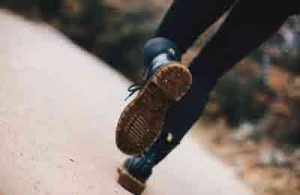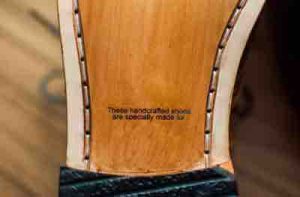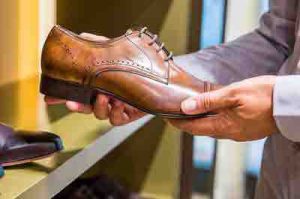“How long do leather shoes last in storage?” People often ask this question for majorly one reason – to know the right time range to store their leather shoes before the shoes begin to deteriorate to the extent of being unwearable. Other reasons are secondary.
Generally, leather shoes last for decades if stored and taken care of. Otherwise, it will only take less than 2 years before they begin to show signs of deformities in some of its components; mostly between the midsole and the outsole, and other parts where adhesives are used.

When in use and cared for, leather shoes mostly outlive their owners.
When these leather shoes deteriorate during storage, there’s usually a minute chance of the leather part itself being subject to damage. There’s however, a slim chance of cracking.
Nonetheless, if you bought a pair of quality welted shoes, they will still be wearable as long as they are being properly taken care of, especially with wax polish to stop cracks.
This article will give you a detailed and easy-to-understand explanation of the said question so that you can have a full grasp of all factors and integral reasons that affect the longevity of stored leather shoes, and why some will have a relatively long shelf life.
How long do patent leather shoes last?
Table of Contents
Generally, patent leather shoes last up to 3 years before they begin to bow to external factors that enhance deterioration.
However, the extent to which a certain patent shoe lasts depends on its use and how well it is cared for.
While leather shoes can last as long as time if properly cared for, here is what happens to patent leather shoes – because they were made centuries ago by applying oil on the surface of natural leather, they tend to last longer. Almost as long as 50 years and more.
But the evolution of the process has made a total overhaul of what a “patent leather shoe” now is. Modern leather shoes are plastic coatings applied on the surface of plastic material.
Because of this reason, patent leather shoes that fall under this process of manufacturing do not last more than 9 months before they begin to lose their class and fanciness even if they are in good shape.
How long do faux leather dress shoes last?
Faux leather dress shoes last one-third to one-half of the duration of original leather shoes, which is 1/6 and is equal to 0.17 of the lifespan of genuine leather shoes.
Shoes that fall under this category are made with polyurethane (PU) and Polyvinyl Chloride (PVC) usually last for up to 5 years.
Other polymeric material options used for the design of shoes last within the same time range as PU and PVC.
The reason the faux leather shoes do not last as long as genuine leather is because they are man-made – they are not natural but synthetic which are simply made from sheets of polymers that are heat-stamped by artificial grains of leather just so they can look like original leather.
At a very ridiculously low cost, large quantities of these polymers can be produced, an obvious reason why you can get a pair of faux leather shoes for $30 while a decent pair of leather shoes will cost within the range of 200-$300.
And for the fact that the faux leather shoes are way cheaper does not mean they are economical. “Cheap things are expensive” is true because you will always pay for it in the long run.
How long do leather dress shoes last?

Leather dress shoes can last up to 6 months.
Many questions spring from leather dress shoes as it relates to their shelf life. However, the right answer to this question is based on the analysis of factors that hangs on the question. Factors like:
- If you were in the rain
- The distance you cover daily
- The terrain you walk on
- Your gait
- How many hours do you usually wear your shoe daily
- The type of polish used
Most of the answers people get when they ask the said question are usually from places of sheer opinions devoid of proper analysis. People just dish out their takes relying on their intuition without good evaluation.
Even if professional shoe designers should take estimates from their random shoe customers and say “leather dress shoes last a year”, you can get soaked up in the rain the next day and not dry your shoes, then knock up on some sharp object to cause a tear.
The answer I gave came from a place of having been in the shoe industry for years — of technical knowledge and from a place of personal experience.
Understand that the time it takes for leather dress shoes to last is dependent on the aforementioned factors, but it is most probably going to be 6 months.
How long do unworn leather shoes last?
Genuine unworn leather shoes have a higher shelf life even after heavy finishing and tanning and can last for up to 40 years and more.
Provided they are stored in places where they are not subjected to much heat and dryness or too much moisture.
Stored unworn leather shoes do not easily get spoilt. You can increase their shelf life by polishing them at 15 days intervals and keeping them at room temperature. Leather is an intricate material that doesn’t just wear out for no just cause.
When you ask how long unworn leather shoes last, it depends on what you mean by “last.” If you mean crease or weakening of the adhesives used in holding some of the components together, then unworn leather shoes get creased and out of shape when left to be.
The adhesives used in holding the shoe’s midsole and the outsole weaken too and give off its strength. However, the leather material used gets even more beautiful with time.
How long do leather-soled shoes last?

There are different types of leather. The quality of each type determines its longevity.
| Leather type | Durability |
| Bonded leather | 15-20 uses |
| Genuine leather | 3-4 months |
| Split grain | 1-2 years |
| Top grain | 10-15 years |
| Full-grain | Decades |
The outsole of a shoe is the least part to be taken care of, little wonder why it’s always the first to get damaged. You should know that all leathers are not the same, each with their durability.
So how long a leather-soled shoe will last depends on the type of leather used in the sole of the particular shoe and how fairly the shoe is used and maintained daily.
One simple hack to knowing real leather is to smell it. Simple. Real leathers do not have any trace of chemical or plastic smell. Thereafter you can ascertain its originality through the feel and look.
Do leather shoes last longer?
Yes. Leather shoes last longer. They outlive many synthetic products made from polymeric materials. However, one thing that scares people away from leather shoes is the high price tag.
Leather shoes are indeed expensive, but that is where value meets quality because you’re getting the real thing for your money. Buying leather shoes comes with many benefits.
There are a plethora of qualities that makes leather shoes last long, but the three main qualities are:
- Water resistance
- Durability
- Breathability
Water resistance
Any shoe that has no permeability is going to last long as water cannot penetrate through pores to break the bond of the molecules of the shoe’s material. Leather shoes gain that quality because they are usually waxed or treated.
Durability
Shoes made from synthesized materials are no match for leather shoes. A genuine leather shoe will outlive shoes made from synthetic materials.
High-quality leather shoes stay strong even in the face of some of the toughest conditions. Leather shoes are the ideal choice for shoes that last longer.
Breathability
Breathability simply means permission of air to pass through. Any shoe that permits airflow has solved the problem of allowing the build-up and trapping of sweat inside of a shoe, if the sweat stays there for too long, it doesn’t just smell terrible, but weakens the shoe’s material and causes easy tear.
Should you resole leather-soled shoes?
Yes, you should resole your leather-soled shoes when they begin to go bad.
The fact that leather shoes are of incredible excellent quality doesn’t mean they have immunity over tear and wear that comes with time and use.
One of the major qualities of leather footwear is its ability to have them resoled.
It is often heartwarming when you’re offered the chance to extend the life of something that you love.
Sometimes these leather-soled shoes happen to have holes in their soles. This is the extent where you need to resole the shoe.
This case is not to be repaired, but to be changed. This is because the outsole, the part of the shoe that makes constant contact with the ground is delicate and should be changed
Upon usage, the sole of leather-soled shoes gets “eaten up”, this happens according to your gait pattern. Most times, your shoes end up uneven.
And if this problem is not taken care of early enough, It can cause some foot problems that will affect the knee, ankle and other sensitive body parts.
Can you resole leather shoes with rubber soles?
Yes, you can. Although, not all types of shoes can be resoled.
Whether or not a shoe can be resoled depends hugely on the shoe’s design and construction. But in this case, it can be resoled.
Here, this new rubber sole is not going to equal half the durability of the former one because of the difference in the complexities of both materials
If the upper part of the shoe starts cracking from drying out, then repairing it will end in futility. However, if the upper is still intact and fine, then you can always fix the sole.
You can add extra years to these shoes, but the repair will cost you $20-$30. Never a bad idea as your new soles are sure to be entirely new again.
What to do to protect stored leather shoes

While there is an average estimated period it takes for stored leather shoes to last when kept aside, you should know that the right storage environment and care for leather shoes that are not in use goes a long way in determining the time it will take leather shoes to last in storage.
Here are simple things you should know if you must enhance the shelf life of your leather shoes when they are not in use.
- Insertion of shoe trees
- Store in dark areas
- Polish them at intervals
- Give your shoe room to “breathe”
1. Insertion of shoe trees
It is easy for a shoe to start losing shape and crease when its inside is empty and not in use.
To prevent this from happening, the insertion of shoe trees helps to retain the shape of the shoe such that there is no chance for creasing to set out to be followed by possible deterioration.
A shoe tree is a shaped black put inside of a shoe, it is usually substituted by the used newspaper, cotton sucks, or acid-free butter paper.
2. Store in dark areas
Here you’re advised to keep your shoes away from direct sunlight so they do not bleach out and get faded when they are not in use.
3. Polish them at intervals
The extent to which your shoe upper gets dry and begins to crack is directly proportional to how moist the said uppers are. You must grease them up with polish so that they do not become highly susceptible to easy damage – especially cracking.
4. Give your shoe room to “breathe”
Your leather shoes should have good enough ventilation, just the right amount when you store them.
You should give your shoes the space they need rather than stacking them up in areas where they get pressed and lose their shape. The best solution is the adoption of a shoe rack.
A shoe bag is a bad idea as your leather shoes are going to get stuck into the bag pockets and lose their shape.
